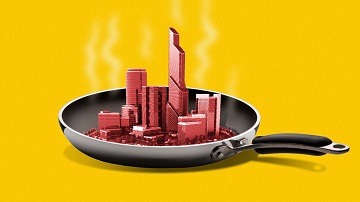 Saturday, April 20, 2024
Saturday, April 20, 2024  Saturday, April 20, 2024
Saturday, April 20, 2024 
As blogged on AXIOS, most U.S. cities are at risk of experiencing extreme heat thanks to the “urban heat island effect” that’s causing cities to warm as much as 50% faster than the rest of the country.
Advertise YOUR business on Construction Links Network – Download the media kit
Why it matters: July was the hottest month ever recorded globally, and it was especially brutal for major metros.